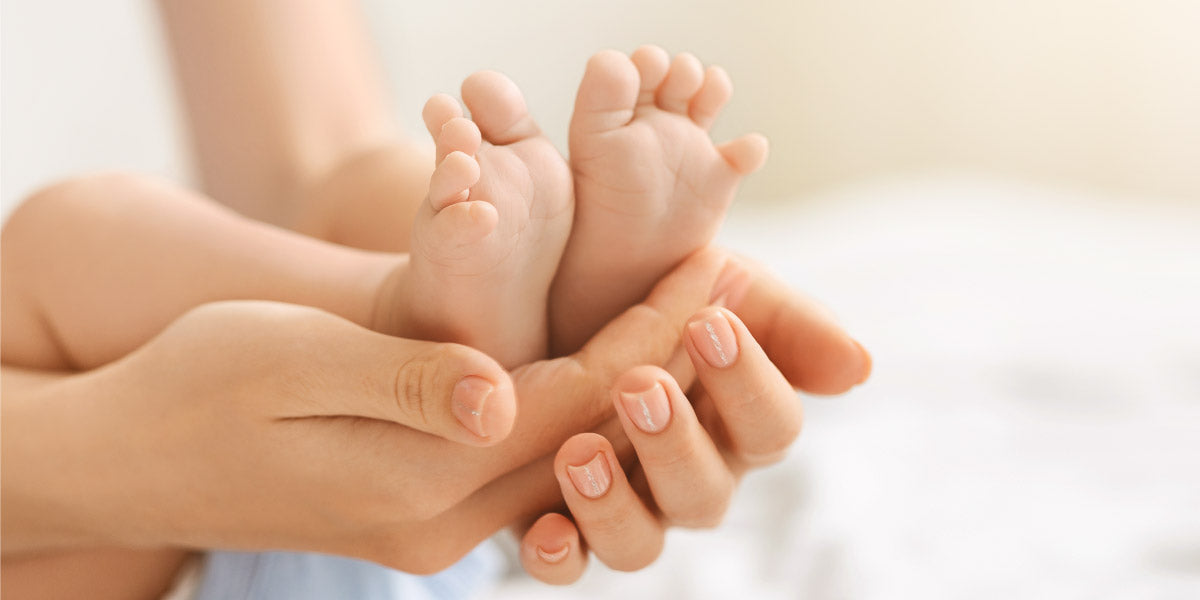From a dark, cozy, warm, fluid-filled space with no sense of touch, gravity, minimal noise, feelings safe and having food “on tap”, to a noisy, light-filled place where gravity is a fact, you are touched and handled plus you need to work for your food!
This must be a very overwhelming experience for them.
So, if you focus on keeping this in mind and “recreating” the womb experience for your baby, you have won most of the new baby battle. Be gently, be kind and be patient – not just with your baby but with yourself as well!
So, what to expect from this little human?
Physical Appearance:
Puffy-eyed and wrinkled: Covered in fine downy hair called lanugo that will fall out over the next few days
Genitals: may appear impressive in both girls and boys due to swelling – its normal and will dissipate
Skin: may be blotchy, and spotty rashes usually appears from day 2 to 3 – this is usually hormonal and does not need to be of any concern. It usually sorts itself out – if not, remember calendula cream is amazing for any spots or rashes. Skin may also be peeling – remember your baby spent just over 9 months on average growing in water!
Nails: might already be quite long and might need a snip. This is usually easier done with a little nail scissor and when baby is asleep
Umbilical cord: you will notice that baby has a clamp on the umbilical cord where it was cut after birth. You need to take good care of this and clean it each time you change the nappy. You could use surgical spirits or wound graze powder to dry it out. It could take anywhere from 3 to 10 days to fall off.
You could also not wet it during bathing until it has fallen off.
Once it has fallen off, the stump area might still bleed a little until it is totally healed. This is okay.
If you are at all worried about the cord or stump, pay your local baby clinic a visit.
Jaundice: this is the yellow discoloration of baby’s skin and even at times of the whites of the eyes.
It is normal in all babies and is due to bilirubin levels rising in baby’s bloodstream. Contact your care provider if baby is too sleepy, struggles to wake for feeds and passes very dark urine.
You can do some “tanning” to assist baby to break down this waste product for it to be excreted in the urine and stools. Expose baby’s skin to natural filtered sunlight through a window. Make sure the room is nice and warm and baby is comfortable. 10 minutes in the morning and 10 in later afternoon should do the trick
Stools: baby’s first stool is called meconium and is black and very sticky. Apply Vaseline or bum cream after birth to prevent struggling to get this off (NOTE: you can never have enough wet wipes…)
Over the course of the next few days the stool color will change to green, and eventually be a very bright watery yellow – especially if you are breastfeeding.
Weight: Baby can lose up to 10% of their birth weight in the first few days – this is normal. We expect baby to be back at birth weight around day 10 to 14. That’s why it is important to go for a one-week check-up at your local baby clinic to check on feeding, and baby’s progress and to address any issues or questions you might have.
Reflexes: Babies have different primitive reflexes that usually disappear around six months of age.
Involuntary grasp reflex – they will fold their fingers around your thumb or finger.
Startling reflexes – baby might startle at very loud noises (also called parachute reflex)
Rooting reflex – when you tickle baby’s cheek, he/she will turn in that direction (does not always mean baby is hungry)
Feeding: Baby will be quite sleepy and drowsy for the first two to three days, and only feed on demand.
Breastfed babies take in about one teaspoon of colostrum per feed every 3 to 4 hours on average for the first day or two. Don’t stress too much about your milk supply – in most cases mommy bodies know exactly what to do…
CRAMPS: this must be the biggest worry for all new parents. Remember, your baby’s gut needs to adjust from amniotic fluid intake for nine months to ingesting either your milk or formula, so there WILL be some bumps.
It does not mean your baby is having colic if he/she cries just before needing to pass stools or wind.
They are just learning how to manage their bodies.
If cramping and wind seems severe, you could opt to use products like Telament Colic Drops or gripe water as advised by your local clinic Sister.
The first two weeks are usually referred to as the “honeymoon” weeks – so do load of skin to skin cuddling with your baby, sleep when you can, drink enough water, eat healthy and learn and grow together.
Article written by Sr Rentia Brueton, HOD at Mopani Clinics.

